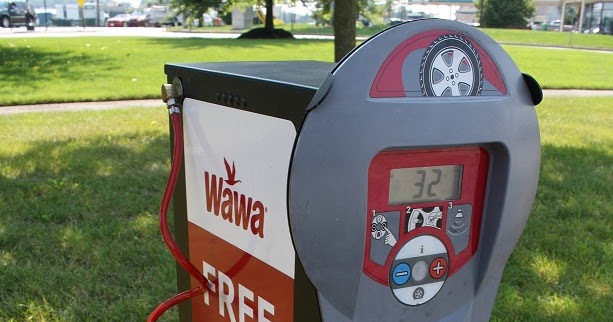Checking the pressure of your tires at a service station is easy, affordable, and convenient. It can be the best way to keep up with one of the most important aspects of the maintenance of your vehicle.
It is very important to maintain your vehicle frequently, and make sure that everything is up to date. Tire pressure check-ups are among the most important routine operations you should consider.
The right pressure can enhance the safety of your journey, and in most cases it can improve the performance of your vehicle as a whole.
If the pressure level is set properly, your car tires will wear out more evenly. This means that their performance will be more consistent throughout the lifespan of the tires, and it will dramatically improve the fuel efficiency of your car. The experience of driving a car with better tires is absolutely mind-blowing, especially if you have been driving with properly pressurized tires for quite some time now.
There are many reasons why you should be aware of the current state of your tires. It is very unsafe to drive with de-pressurized tires. So, it is highly recommended to check up whenever possible. In most cases, it’s advisable to check the pressure of your tires at least once every two months if not more, depending on how often you use your vehicle. There are many ways to check the pressure of your tires. You could go to your trusted car professional or hit any repair shop, and even some dealerships might be able to offer their services.
On the other hand, some of the most popular places where you can check the pressure of your tires are definitely gas stations and service stations. Whenever you check the pressure of your tires at a gas station, you’re most likely to find special gauges, Which are available for this exact purpose. At first, checking your tires with such gauges might seem intimidating. However, they are easier to use than you might think.
Most gas stations will even have detailed instructions that will walk you through each step of the process.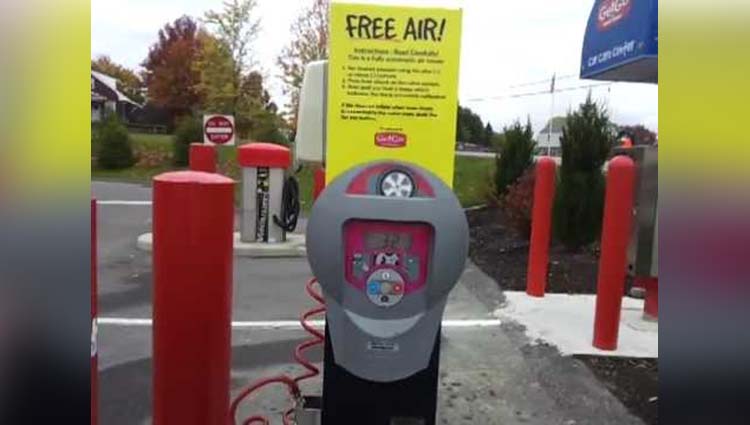 In addition to that, you can always ask a service staff member to help you out check your tire with the gauges if you are really confused and don’t know what to do.
In addition to that, you can always ask a service staff member to help you out check your tire with the gauges if you are really confused and don’t know what to do.
Having said that, it is worth noting that this is a very simple operation that can be performed by pretty much any driver, including beginners.
All you really need is a tire pressure gauge and an air compressor (provided by the gas station) to make adjustments. It might be useful to track the measurements of your pressure over time, you can bring a pen and a notepad along for the ride. If you’re the tech-driven type, you can simply save your measurements on your phone and make it a lot easier.
There are tons of different types of pressure gauges available at gas stations. Some of them are innovative and modern, featuring digital metering and displays. However, most stations still use old-school gauges.
These are still quite relatable and it really is all all about your personal preferences. You can find air compressors at most gas stations as well, and the great thing is that they are super affordable. Using them cost anywhere from a few cents to a dollar, depending on where you are.
Using them cost anywhere from a few cents to a dollar, depending on where you are.
If you're like me, you might consider buying your own personal tire pressure gauge. This is a great tool to have in your vehicle and because it's so small, you can store it pretty much anywhere. Click here to view our line of tire gauges!
In order to make sure that you get the most accurate readings, try to make sure that your tires aren’t really hot. If possible, you should also have the manufacturer’s recommended pressure level (PSI) at hand for reference. If you don’t have paper documents handy, you might be able to easily google this information and look it up from your computer. Of course, the vast majority of tires available on the market (if not all of them) actually would display a PSI indication, showing the max pressure recommended.
There are many people who prefer to slightly under-pressurize their cars in relation to the recommended maximum levels. This is because the air might expand as you drive and the tires heat up, therefore potentially increasing the pressure of the tires. This is something that’s particularly common throughout summertime, and in particularly hot areas.
This is something that’s particularly common throughout summertime, and in particularly hot areas.
You are likely going to come across the term PSI, as mentioned earlier on. This refers to “Pounds Per Square Inch,” and it is a standard pressure measurement, that’s really important to consider. Now, what do we mean by “cold tires?” This is a term that indicates the state of tires after the vehicle has not been in use for at least 3 or 4 hours. In addition to that, you can still consider your tires cold if you have been driving your car for less than one mile, and you didn’t travel so fast. This is really good news if you actually have a service station near your home. It means that you can easily take the quick drive to the gas station and check the tires right away, without actually waiting.
As mentioned earlier, you should definitely check the pressure frequently, at least once every couple of months for optimal results.
If the pressure of your tire appears to be too low after checking, you might be able to add some air at the gas station.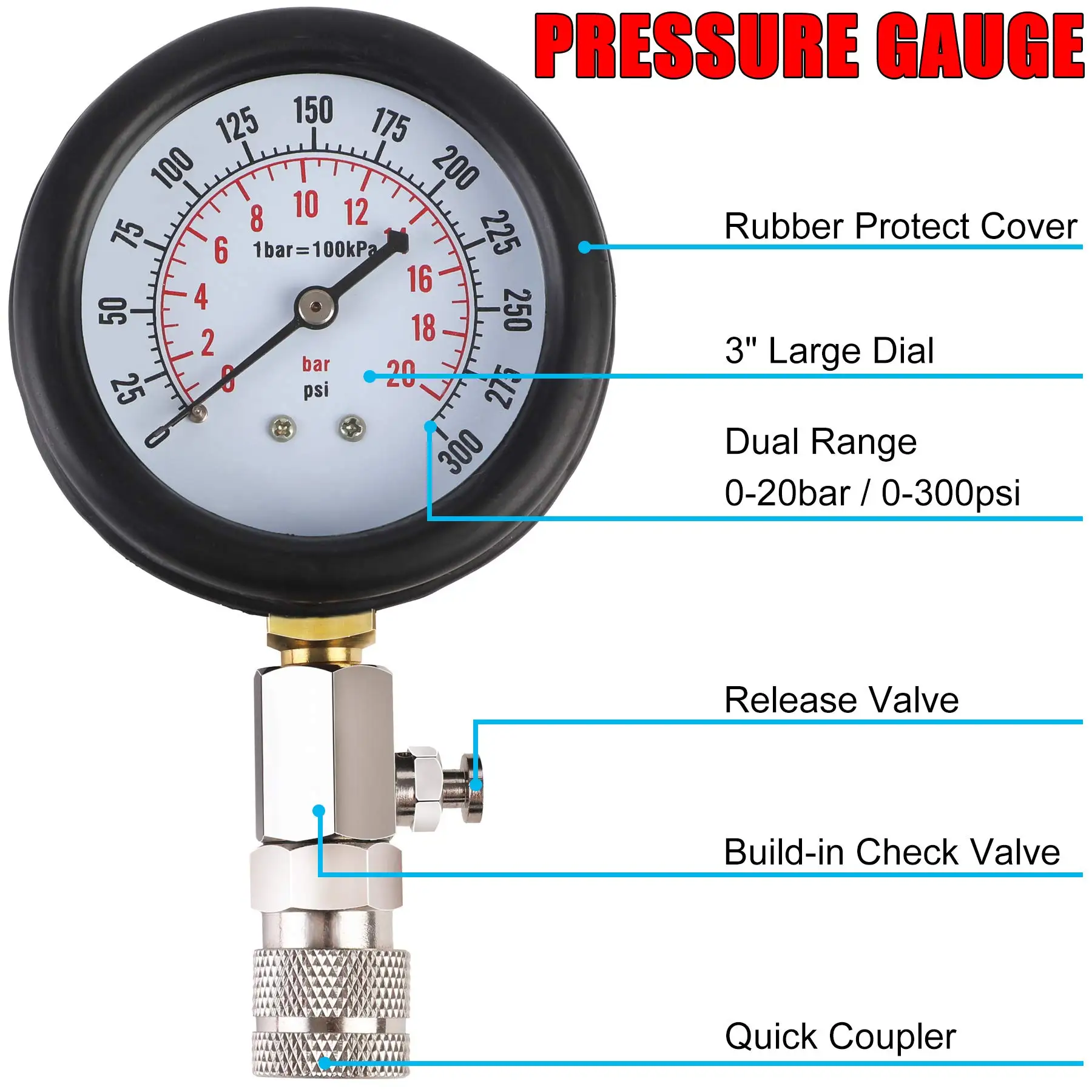 It usually will only set you back some spare change, and a few quarters should do the trick! Using the air dispenser is very easy, and it is usually free at most stations in the states. Having said that, it is definitely a good investment even if you have to pay for it.
It usually will only set you back some spare change, and a few quarters should do the trick! Using the air dispenser is very easy, and it is usually free at most stations in the states. Having said that, it is definitely a good investment even if you have to pay for it.
While it is appropriate to add some air to correct low pressure, you also need to pay attention to the other side of the spectrum. Especially during the hot season, you might find that your tires might actually be over-pressurized. How does it happen? As you drive around, heat will begin to build up in the tire. As you might know, hotter air can lead the tires to expand and overinflated.
When checking tire pressure, you should care about the accuracy of your measurement. The last thing you want to do is to actually over-inflate the tire, and come out with an incorrect balance. If you follow these suggestions you are certainly going to be able to avoid the hassle of a flat tire and improve the longevity of your tires, not to mention the performance of your vehicle.
In conclusion, keep in mind that checking the pressure of your tires is very important. You should never underestimate the safety of your self and your family, especially if you are getting ready for long car trips or if you use your vehicle on a day-to-day basis. In fact, the more often you use your car, the more often you should consider checking the pressure of your tires to make sure that you do not run into any unexpected issues.
Featured Product: Rhino USA 100 PSI Tire Pressure Gauge Your browser does not support our video.
Thank you for taking your time to read our article, as mentioned above we sell a line of high quality Tire Pressure Gauges designed for the on-the-go experience. Much better than having to stop at a Gas Station for a quick PSI reading. Get your own gauge today by clicking here.
What is the best tire pressure gauge?
The best tire pressure gauge is the 100psi and 200psi Rhino USA tire pressure gauges. They are certified ANSI B40.1 accurate and come with a premium "no-leak" braided hose and interchangeable solid brass chucks. Rhino USA makes the best tire pressure gauges and to top it off, they all come with a lifetime warranty.
They are certified ANSI B40.1 accurate and come with a premium "no-leak" braided hose and interchangeable solid brass chucks. Rhino USA makes the best tire pressure gauges and to top it off, they all come with a lifetime warranty.
Are digital tire pressure gauges accurate?
A properly calibrated digital tire pressure gauge can be one of the most accurate ways to measure your tire pressure. Rhino USA's digital tire pressure gauge is one of the most accurate tire pressure gauges in the industry, and it features a backlit LCD display and a lighted nozzle for fast, accurate tire pressure readings.
Back to blogby Cassandra Tribe
Maintaining the correct air pressure in your car's tires not only increases your safety on the road, but improves the car's gas mileage. The correct air pressure for a tire is written on the side of the tire and listed as a number of pounds per square inch (PSI).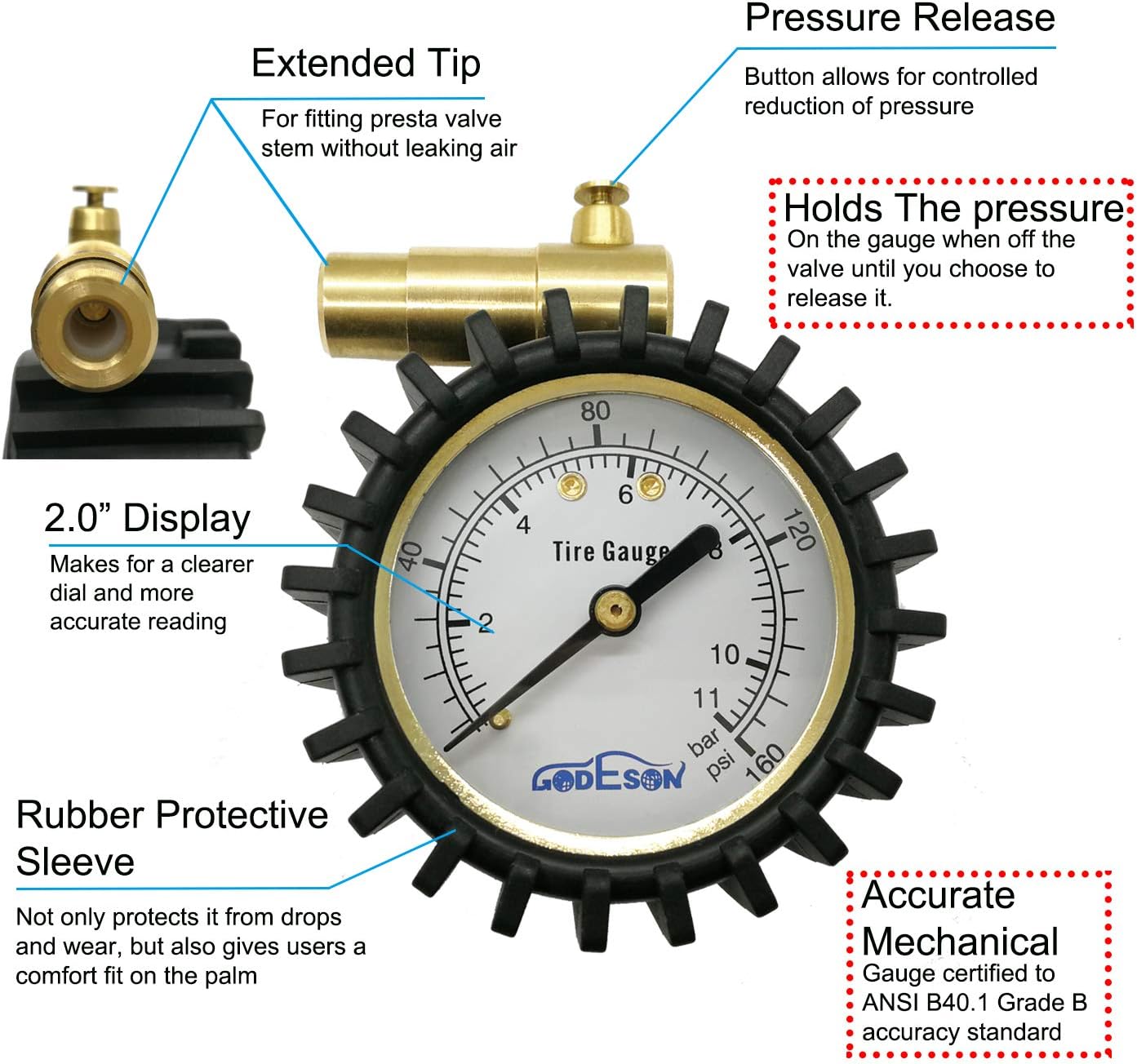 Once you have located that number, you can take your car to check the tire pressure at a gas station.
Once you have located that number, you can take your car to check the tire pressure at a gas station.
Go to a gas station that has an air machine for filling tires. They are usually located outside and look like small boxes with long, black hoses attached to them (sometimes they are marked 'Air'). Pull your car up to the machine so the machine is centered on your car. This way, the air hose is sure to reach all of your tires.
Pick one tire to start with and locate the PSI label on the tire. It will be written on the side of the tire: Find the numbers or letters of the brand of tire and at the end of that label, typically given in a parentheses. For example, the side of a tire may read: PR300345 All Weather (30-45 PSI). This tire requires between 30-45 PSI to operate safely.
Remove the tire air stem cap. The air stem is a black stem that will be protruding through your rim, with a screw-on cap.
Pull the air hose over to the tire. Most air hoses have a trigger assembly on the end. The tip will fit over the end of the air stem. Press the tip down firmly on the stem for two seconds, and the built in pressure gauge on the top of the trigger assembly will extend a pressure reading bar. Pull the tip of the air hose off the air stem. If the air hose does not have a trigger assembly, purchase a tire gauge from the gas station or from an auto supply store. Press the tip of the gauge over the stem and the pressure bar will extend out the back. Remove the gauge.
Most air hoses have a trigger assembly on the end. The tip will fit over the end of the air stem. Press the tip down firmly on the stem for two seconds, and the built in pressure gauge on the top of the trigger assembly will extend a pressure reading bar. Pull the tip of the air hose off the air stem. If the air hose does not have a trigger assembly, purchase a tire gauge from the gas station or from an auto supply store. Press the tip of the gauge over the stem and the pressure bar will extend out the back. Remove the gauge.
Read the pressure bar to see the current PSI level in your tire. The pressure bar is marked with a series of lines and numbers. Most pressure bars use lines to indicate two pounds of pressure in-between whole numbers. For example, there will be four lines at the very tip of the bar and then the number 10; then four more lines and the number 20, etc. The point where the pressure bar has stopped extending from the case indicates the number you should read to determine the PSI level in your tire.
Add air, if necessary, by pressing the tip of the air hose down on the air stem and holding the trigger in. Wait a few moments, release the trigger and remove the air hose. Check the tire pressure again. Make sure you have pushed the pressure bar back in before beginning the process, or your reading will not be accurate. Repeat until you have the correct PSI level in your tire.
References
Tips
Things You'll Need
Warnings
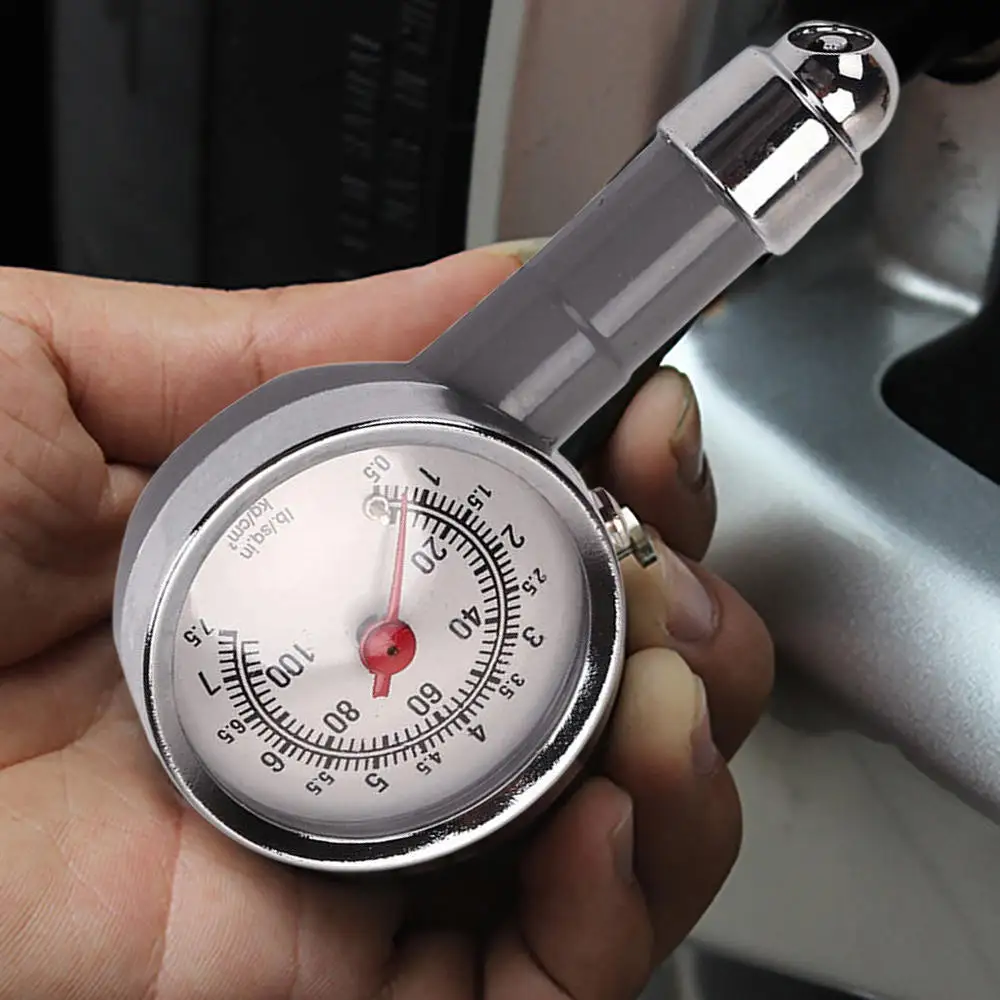 Both instances greatly increase your chances of an accident through tire failure or loss of steering control.
Both instances greatly increase your chances of an accident through tire failure or loss of steering control. Writer Bio
Cassandra Tribe has worked in the construction field for over 17 years and has experience in a variety of mechanical, scientific, automotive and mathematical forms. She has been writing and editing for over 10 years. Her areas of interest include culture and society, automotive, computers, business, the Internet, science and structural engineering and implementation.
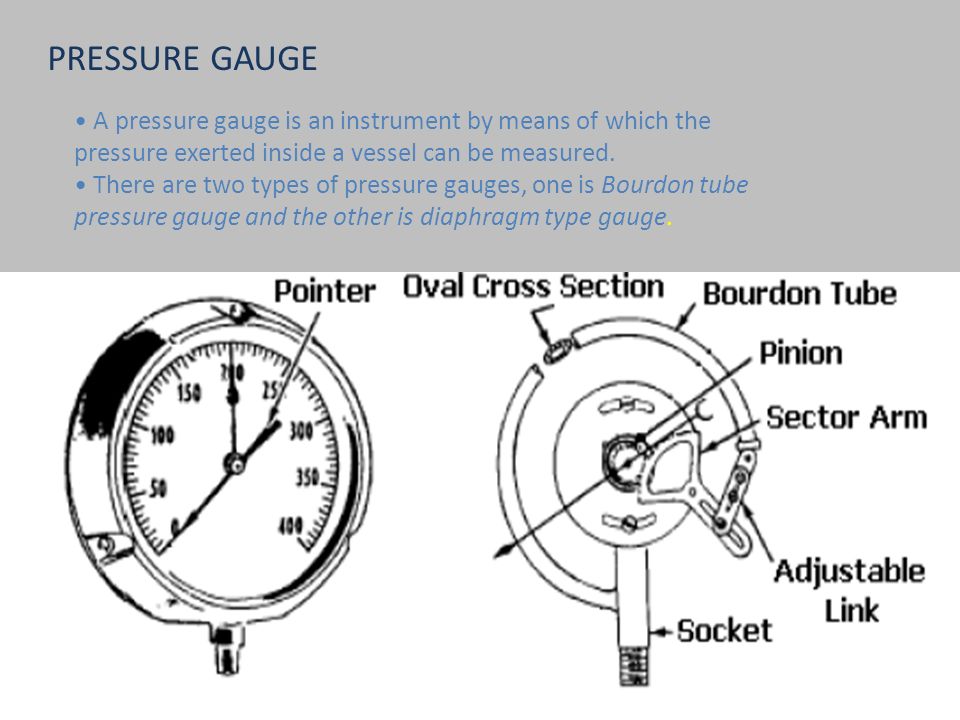 S.
S.  S.
S. | Vitaly Kabyshev, . Photo of manufacturers | |
| A punctured tire is always very annoying. But it is better to know about the flat tire in advance - this is where tire pressure sensors will help. |
The first patent for a tire was obtained in 1846, and since then the wheels have been constantly punctured. It is clear to anyone that a flat tire does not bode well. Yes, and dropped pressure can be very dangerous: it’s not for nothing that in the “Daily Maintenance” section of the car’s operating instructions, the item “Checking tire pressure” is one of the first.
When a tire "breathes", the rolling resistance increases significantly.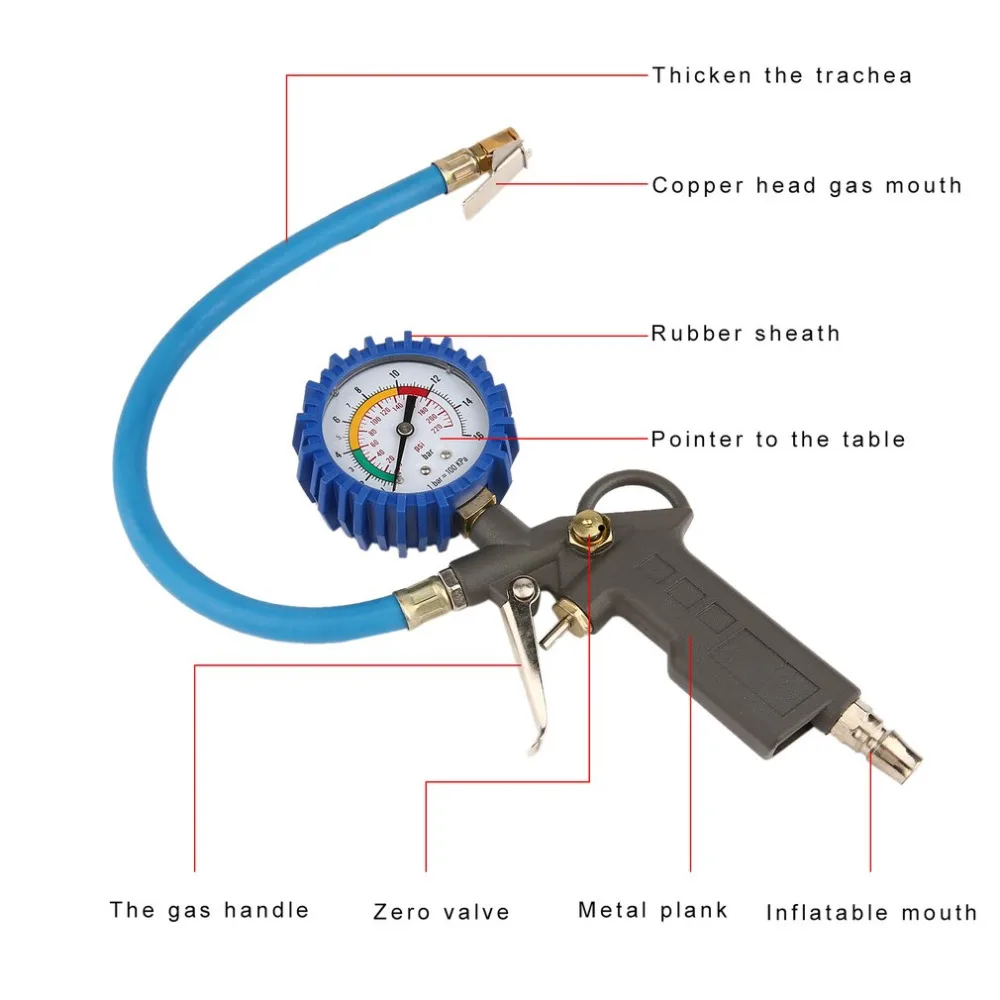 Where does this lead? To an increase in fuel consumption, increased tire wear and, of course, to the side slip of the car. Moreover, such a small drift to the side can be attributed to the slope of the road or rut. So the driver, by mistake or inexperience, can continue to move for quite some time. And the most dangerous thing about this is that in an emergency, for example, during a sharp maneuver or braking, a flat tire can break off the disc or turn over. And here it is not far from the accident.
Where does this lead? To an increase in fuel consumption, increased tire wear and, of course, to the side slip of the car. Moreover, such a small drift to the side can be attributed to the slope of the road or rut. So the driver, by mistake or inexperience, can continue to move for quite some time. And the most dangerous thing about this is that in an emergency, for example, during a sharp maneuver or braking, a flat tire can break off the disc or turn over. And here it is not far from the accident.
Therefore, this disgrace must be fought with all our might. And the sooner the driver notices the loss of pressure, the better. Of course, the easiest way is to check the pressure before the trip by connecting a pump or pressure gauge to each wheel in turn. But we are lazy and forgetful people. And the pleasure of poking around in the cold or in the rain with some kind of devices is small. Moreover, there is already a whole bunch of systems that can check this very pressure.
China-made caps indicate pressure loss by changing color.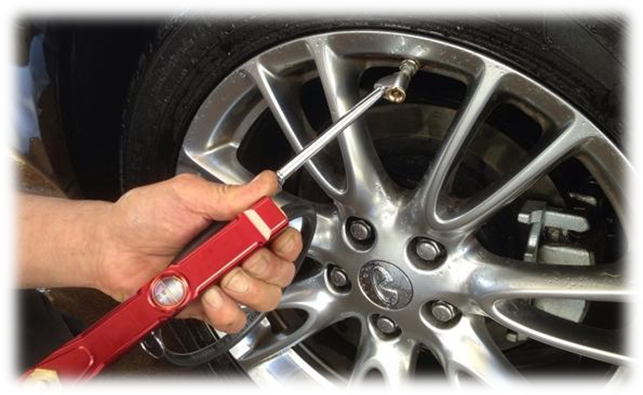 Informativeness is good, accuracy is questionable.
Informativeness is good, accuracy is questionable.
The simplest of them are special caps with color indicators that are installed instead of the regular ones on the boost valves. The pressure dropped below, say, two atmospheres - a warning yellow (orange, purple) strip will appear under the transparent cap of such a miracle cap. Yeah, it's clear that something is wrong with the wheel, we need to check. The pressure has dropped even lower - the cap will “paint” in a different, usually red color, which will indicate the criticality of what is happening. The advantage of this approach is simplicity. Minus - not enough good information content. After all, the caps can only be seen during a stop. Still, getting around the car before the trip, looking at the colors of the caps, is much easier than measuring the pressure every time.
Another disadvantage is that the caps start informing about the change in pressure only when it falls below some certain values, which, by the way, can be quite normal for your car and your wheels. So, you need to select them exactly for your car.
So, you need to select them exactly for your car.
The radio sensors of many electronic monitoring systems are mounted on the disk using special clamps.
And in order to notice something wrong while driving, it would be nice to have an electronic system on board that would automatically notify you of dangerous pressure drops. And not just notify, but would do it on time (so that there was time to orient) and without false positives.
The installed control system in this case will warn the driver at the right time about a change in the corresponding parameter and give him enough time to stop the car safely. It is clear that in cases of a serious puncture or explosion of a tire, such systems will not help, since the driver will feel the car pull without any sensors. But with a “slow” puncture, such electronics are simply irreplaceable.
There are, for example, systems that transmit tire pressure and temperature data to the central unit via radio. And there are those who can transmit this data via Bluetooth to phones or communicators. Well, it's very convenient.
Well, it's very convenient.
X-Pressure pressure monitoring system developed by Pirelli. In the simplest version of Optic, it consists of four caps that are installed on regular valves. And they signal a drop in pressure by a change in color.
But there are more tricky systems that work without "real" pressure sensors, but through ABS. It is they who are usually put in the standard configuration of cars. How do they work?
Electronics with the help of sensors determines the speed of the wheels and their relative difference at each moment of time. As you know, when the pressure drops, the height of the tire profile becomes lower. Consequently, the speed of rotation of the wheel with the "sick" tire increases, therefore, the difference in the frequencies of rotation of the wheels on the same axle also increases. As a result, the system captures these changes - and gives an alarm signal.
Acoustic X-Pressure system. Sensors are built into the caps that register pressure, and radio transmitters that provide communication with the central unit.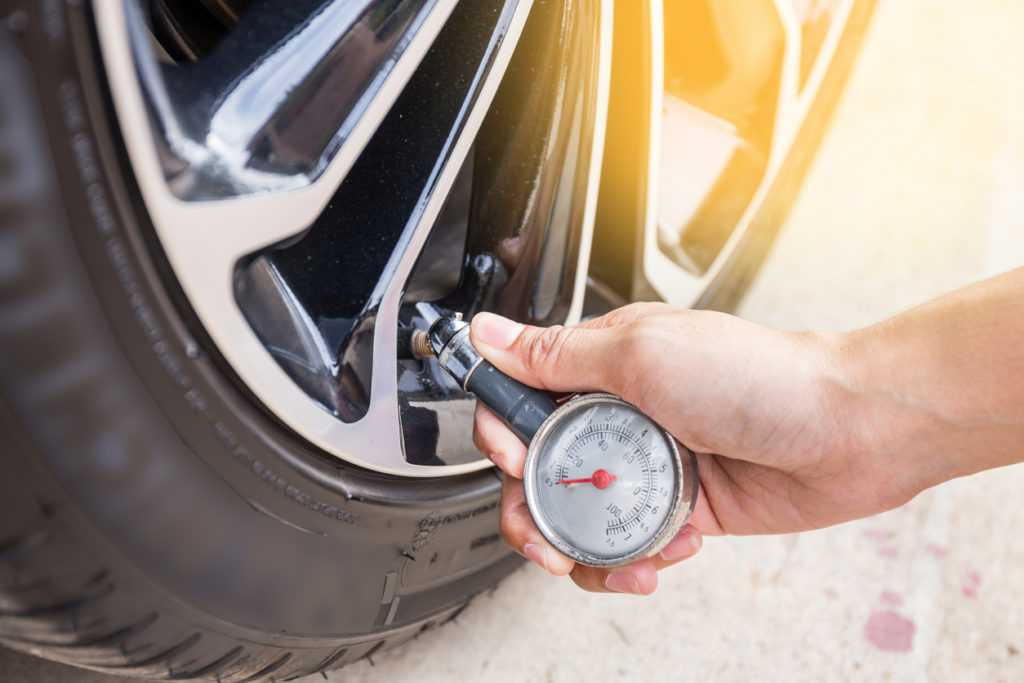 As soon as the pressure has dropped, a corresponding indication appears on the display of this unit and a warning sound signal is heard. Batteries in caps are enough for about 5 thousand hours of operation, which corresponds to five years of operation. Replacement of batteries in the caps is not provided, therefore, at the end of the service life, the set must be changed completely.
As soon as the pressure has dropped, a corresponding indication appears on the display of this unit and a warning sound signal is heard. Batteries in caps are enough for about 5 thousand hours of operation, which corresponds to five years of operation. Replacement of batteries in the caps is not provided, therefore, at the end of the service life, the set must be changed completely.
Why is this indirect method of determining tire pressure bad? Such systems can work, for example, in long turns, when for a relatively long time the system detects a large difference in the rotational speeds of the wheels of different sides (after all, the outer wheels spin at a higher speed than the inner ones). And these are flowers.
One of the more sophisticated X-Pressures, AcousticBlue can transmit pressure data via Bluetooth to a mobile phone. There is such a thing from 160 euros.
In some cases, such systems are useless at all. For example, when tires with run-flat technology are installed on a car.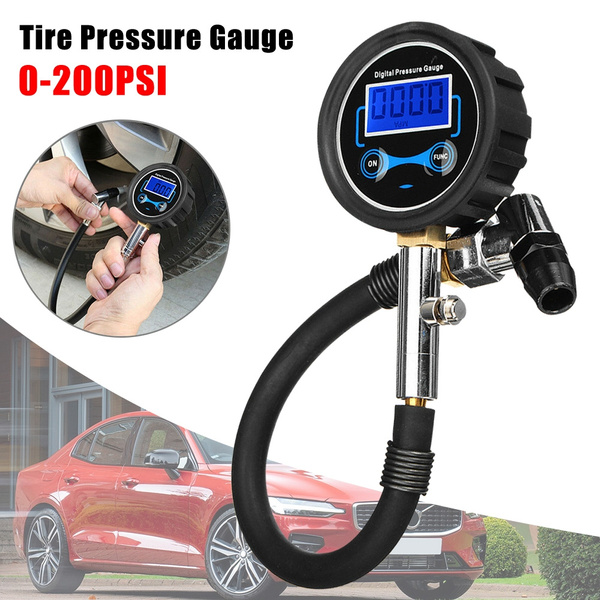 Recall that for tires with this technology, even with a complete loss of pressure, the profile height decreases slightly - by about 30-40%. There is no pressure in the tire, and the reinforced sidewalls continue to “hold”, and not just hold, but allow you to continue moving at a very decent speed, for quite a long time.
Recall that for tires with this technology, even with a complete loss of pressure, the profile height decreases slightly - by about 30-40%. There is no pressure in the tire, and the reinforced sidewalls continue to “hold”, and not just hold, but allow you to continue moving at a very decent speed, for quite a long time.
Many cars themselves warn their owner of a drop in tire pressure.
Still, this system can help a lot, especially on a long journey, warning you in time that there are problems with the wheels. But relying on "helpers" is not completely worth it. Therefore, instead of the conclusion, we will write only two, no, three words. Watch the pressure, comrades! At least once a week, and if you notice that the wheel is flat, don't be lazy, pump it up.
Comments
Share
Like
Tweet
Send
© 2005–2023 Drive LLC, mass media registration certificate No. ФС77-69924 16+
Full version of the site
Alina Deeva
8 years old cannot buy a compressor
Author profile
obvious problems and you can’t drive a car.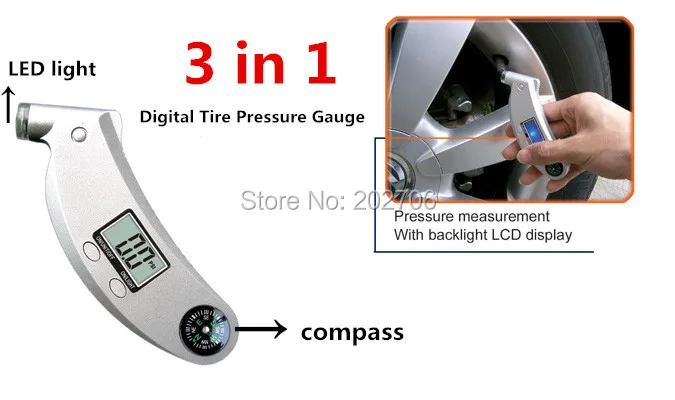
However, everything is much more complicated: how the car will behave on the road depends on the pressure, how often the suspension will have to be repaired, the rims corrected and the tires changed. The more attentive the driver is to tire pressure, the less he spends on car maintenance.
Tire pressure can be normal, under or over.
At normal pressure , the tire is in contact with the road surface evenly throughout the entire tread pattern. When turning, the contact patch may change, but on a flat surface when moving straight, it does not change. Contact patch - the bearing surface of the wheel, the part of the tire that comes into contact with the road surface.
When the tire pressure is low, the contact patch shifts to its sidewalls. The wheel rests on the side surfaces, while the central part collapses. Here are the main consequences of insufficient tire pressure:
The wheel rests on the side surfaces, while the central part collapses. Here are the main consequences of insufficient tire pressure:
With overpressure , the contact patch moves to the center of the tire, the side surfaces of the wheel do not come into contact with the coating. This also causes premature tire wear. That's why it's bad:
/guide/rezina/
How to choose tires for a car or crossover
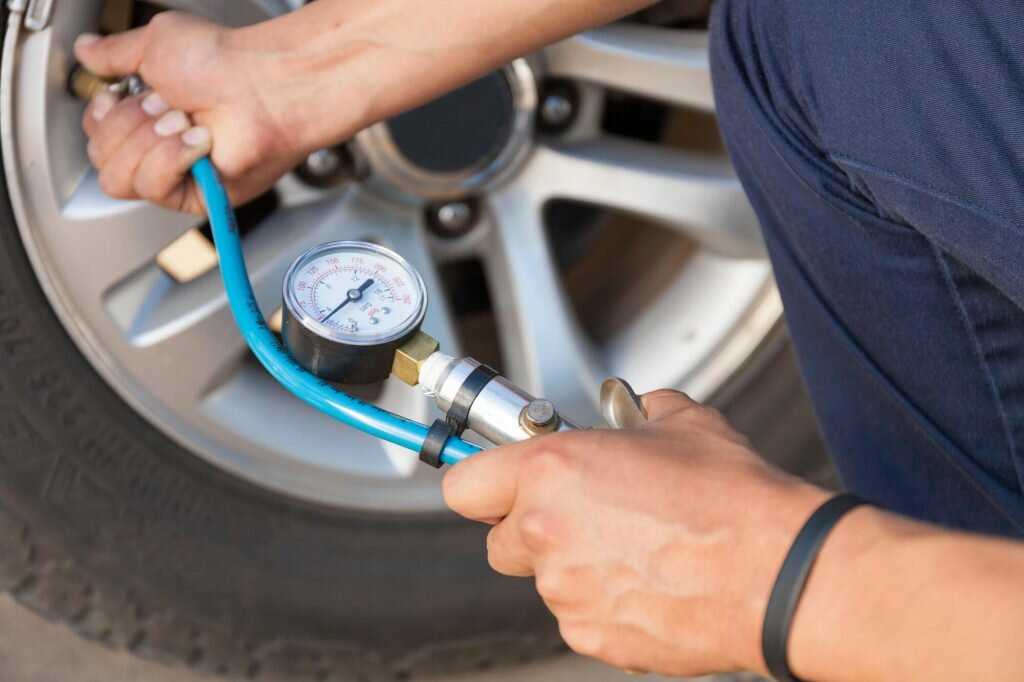
Different tire pressures is another variation from the norm. In this case, all four tires will wear out differently. In addition to the consequences already listed, the car can drift to the side of the wheels with the least pressure. According to the recommendations of manufacturers and specialists, the pressure should be the same in tires for wheels of the same axle.
Normal pressure in passenger car tires is in the range of 1.9-2.5 bar. But each manufacturer has its own standards. On the Internet, it is quite easy to find summary tables with such standards for almost all makes and models of cars.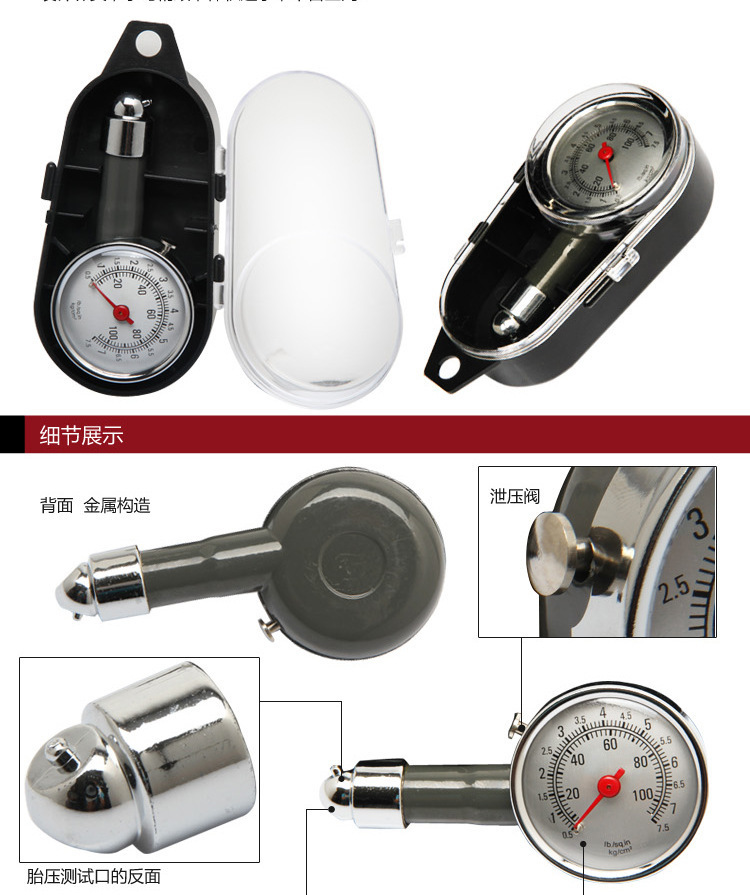 But it is difficult to understand when the information is reliable: on the official websites of automakers or tire manufacturers, this data is usually not available, and where third-party sites got it from is unknown.
But it is difficult to understand when the information is reliable: on the official websites of automakers or tire manufacturers, this data is usually not available, and where third-party sites got it from is unknown.
In addition to tables with manufacturers' standards, there are also average normal values for wheels of different sizes. But it is better to adhere to official recommendations, especially since they can almost always be found on the car itself.
/guide/shina-s-probegom/
How to buy used tires for a car
If you have a car owner's manual, you can search for tire pressure standards in it. There is also information on the car itself. Here's where she might be:
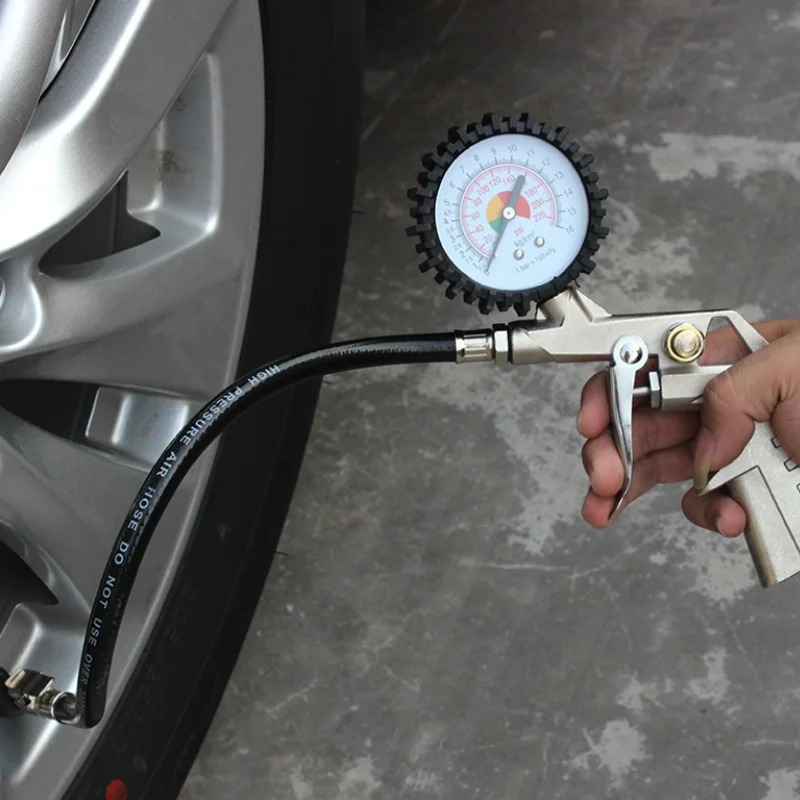 Follow the link for a table and recommendations.
Follow the link for a table and recommendations. Another way to find out what pressure should be in your car's tires is to use various pressure calculation calculators. It is enough to select the make, model and year of manufacture of the car to get the recommended axle pressure. Some services provide a choice of season and weight - the standards will vary.
The pressure value is also applied to the tire itself. Usually it is specified separately from the dimensions in psi - pounds per square inch.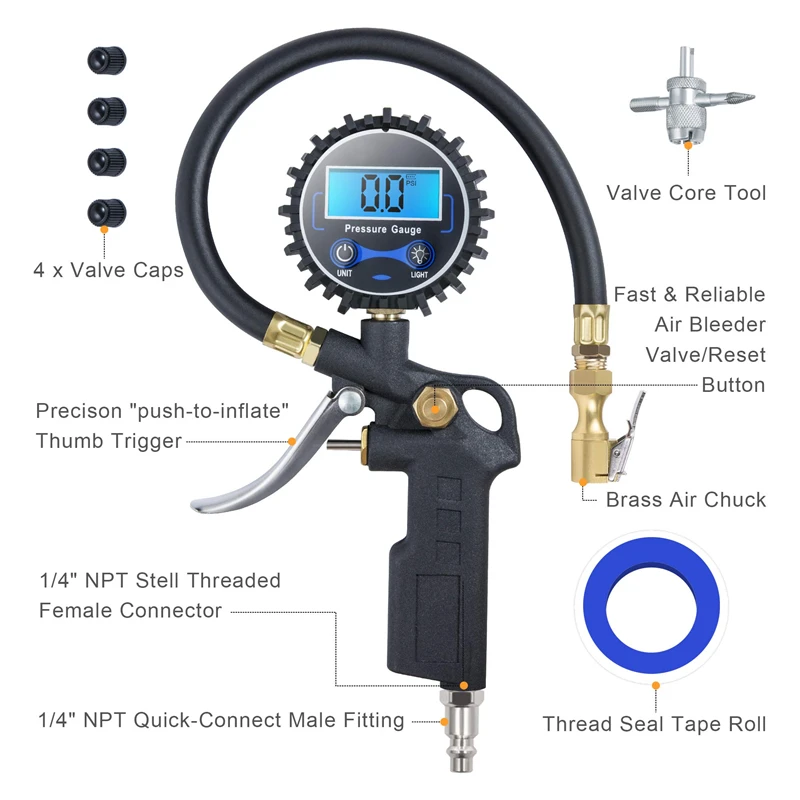 But this indicator cannot be used as a normative one: it indicates the maximum allowable pressure that a tire can withstand. If you inflate the wheels to this pressure, they will most likely burst.
But this indicator cannot be used as a normative one: it indicates the maximum allowable pressure that a tire can withstand. If you inflate the wheels to this pressure, they will most likely burst.
When using a car regularly, it is important to measure tire pressure at least once or twice a month, and preferably once a week. Be sure to do this before a long trip, after a long stop and with a sharp change in temperature. After changing seasonal tires, it will be useful to check the pressure after about 100 km of run.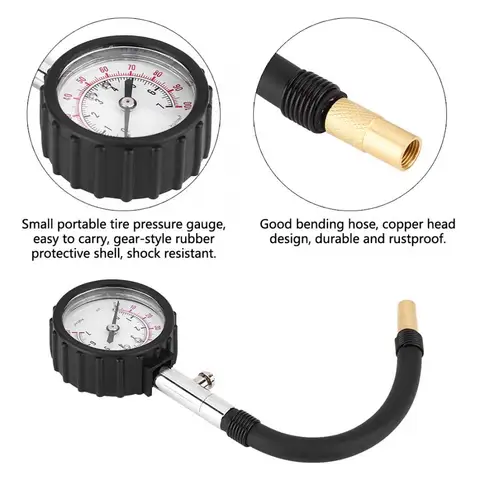
You can measure tire pressure yourself or at any tire shop: most likely, they won’t even take money from you.
To measure the pressure yourself, you will need a pressure gauge. Here's what they are:
Most often, the pressure scale on pressure gauges is made in bars, in Russia this particular unit of measurement is used. Sometimes a double scale is found on dial gauges, pressure is added in psi. 1 bar is 14.5 psi.
You can find similar tables for converting one value to another and use them. Here are generally all options for units of measurement and indications up to 4.0 bar. Source: pokrishka.ru Another way to convert the pressure value from one unit to another is to use any online converter. Source: google.com
Here are generally all options for units of measurement and indications up to 4.0 bar. Source: pokrishka.ru Another way to convert the pressure value from one unit to another is to use any online converter. Source: google.com If you haven't bought your own pressure gauge yet, you can measure tire pressure at a gas station. Large gas stations, as a rule, are equipped with special points for tire inflation, where there are also pressure gauges. And there is also a pressure gauge on almost any compressor.
Modern vehicles have a tire pressure monitoring system. When it falls below the recommended rate, a corresponding icon appears on the on-board computer. This system is called the Tire Pressure Monitor System, TPMS.
If such a system is not available from the factory, you can purchase a similar one. It operates by analogy with the factory one: sensors are installed on the rims, and a control unit is installed in the passenger compartment, to which pressure and temperature readings from each of the wheels are constantly transmitted.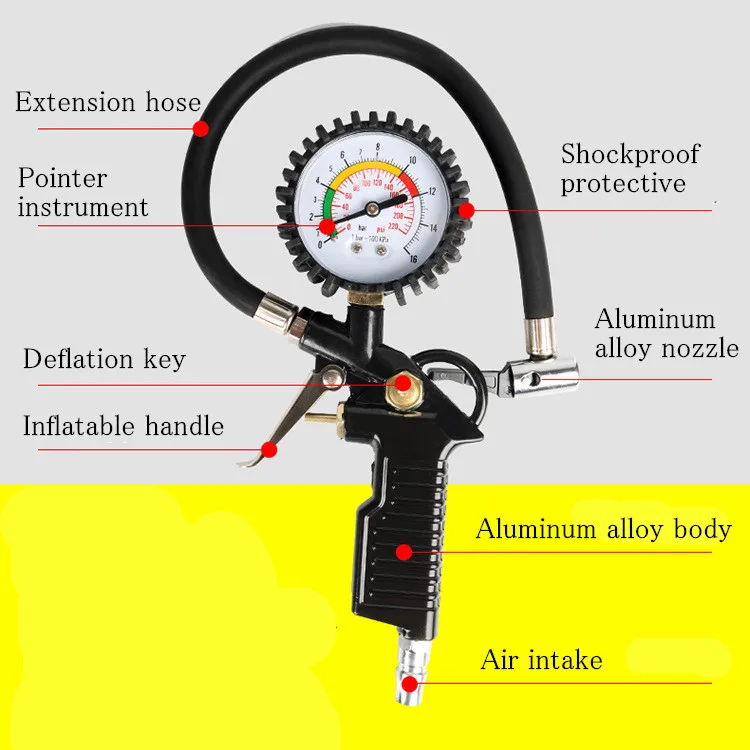 There are many options for different brands and models of cars, and the cost starts from about 2000 R. Often, sensors in such systems are installed instead of a nipple cap. They are larger, stick out a lot, so they are easy to damage when driving on bad roads or deep snow.
There are many options for different brands and models of cars, and the cost starts from about 2000 R. Often, sensors in such systems are installed instead of a nipple cap. They are larger, stick out a lot, so they are easy to damage when driving on bad roads or deep snow.
/wtf/bezkoles/
How online tire shops cheat car owners
Here's how tire pressure monitoring systems work.
According to ABS sensors. Analyzing the speed of rotation of each of the wheels, the control unit will quickly realize that one of them has begun to rotate at a different speed, an indication will appear on the instrument panel. At the same time, there will be a pressure reset button in the cabin or in the on-board computer menu. It must be pressed after adjusting the pressure so that the control unit remembers the new readings.
According to the sensors in each of the wheels. The sensors are installed inside the tire under the rim nipple. The antenna captures their readings and displays them on the on-board computer screen, the data can be monitored in real time: in the morning, after overnight parking or when driving on the highway in hot weather.
The antenna captures their readings and displays them on the on-board computer screen, the data can be monitored in real time: in the morning, after overnight parking or when driving on the highway in hot weather.
Different car manufacturers have different sensors. For example, Volkswagen and Mercedes have no difference on which wheel which sensor is on: the system itself will determine and show the pressure correctly. But on Hyundai or Subaru, the sensors are located exactly where you need them: if you swap them, the readings will be displayed incorrectly, and the wheels on the on-board computer screen will be confused.
/list/lampochki-na-paneli-priborov/
How to correctly read the signs on the dashboard
A yellow exclamation mark in a tire cut across is a “Check tire pressure” sign. Photo: Smile Fight / Shutterstock Standard dial gauge. It usually has two scales and a reset button. Source: market.yandex.ru Mechanical pressure gauges are like a pen.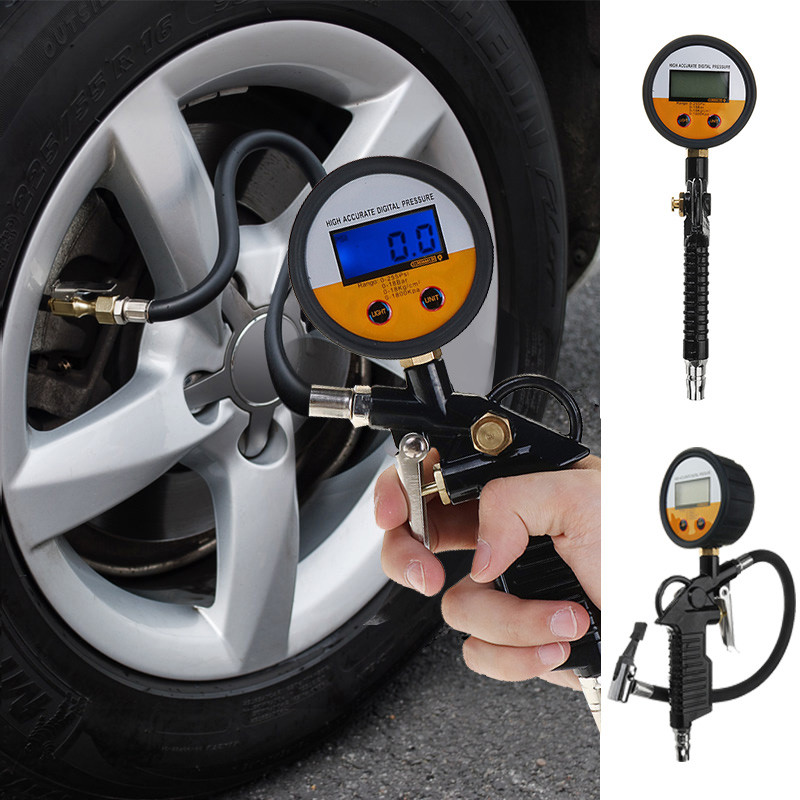 These are hollow tubes with a drop-down scale. They are stronger than turnouts, but may be less accurate. Source: market.yandex.ru Electronic pressure gauge is the most modern and accurate. In addition to fixing readings and a reset button, it usually has a backlight. It is much more convenient to measure tire pressure in the dark in this way. Source: market.yandex.ru
These are hollow tubes with a drop-down scale. They are stronger than turnouts, but may be less accurate. Source: market.yandex.ru Electronic pressure gauge is the most modern and accurate. In addition to fixing readings and a reset button, it usually has a backlight. It is much more convenient to measure tire pressure in the dark in this way. Source: market.yandex.ru To measure tire pressure, you need to unscrew the cap on the nipple, reset the pressure gauge and install it on the valve. The readings obtained are compared with the recommended norms and, if necessary, the pressure is adjusted. It is important to measure the pressure on each wheel, and the tires must be "cold": the car needs to stand for at least a few hours.
If the pressure is below normal, the wheel must be pumped up with a compressor from the cigarette lighter, a foot pump or a stationary compressor at a gas station or tire shop. Almost each of these devices also has a pressure gauge, so you don’t have to use a separate one.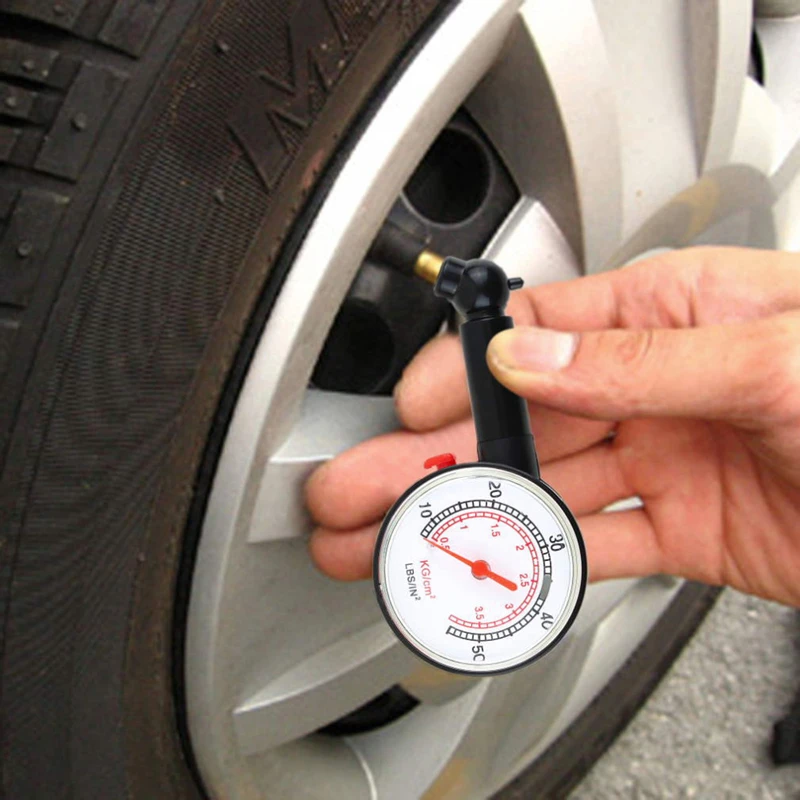
/list/mashina-vsegda-gotova/
6 habits that will help you avoid ridiculous car troubles
High blood pressure is not a problem either. It is enough to press on the spool in the nipple and bleed off excess air.
At the very end of the procedures, it is important to screw the cap on each nipple.
Almost every major gas station has a similar tire inflation machineThe tire pressure of a car does not always have to be the same. Its normal value may change under the influence of various factors.
Season. In summer, due to the high temperature, the air in the tires expands, the pressure becomes higher. And if you move on hot asphalt, then the indicator will increase even more. Therefore, in summer it is especially important not to pump the wheels and check the pressure on well-cooled tires.
In winter, when the temperature drops, the pressure level in the tires, on the contrary, drops. Not critical, but it is worth considering when pumping up the wheels. In this case, the pressure should be measured only after the car has stood still in the open air for at least a couple of hours. In winter, it makes sense to pump over the wheels by 0.2 bar.
Not critical, but it is worth considering when pumping up the wheels. In this case, the pressure should be measured only after the car has stood still in the open air for at least a couple of hours. In winter, it makes sense to pump over the wheels by 0.2 bar.
Car loading. Pressure standards for different car loads are usually already indicated by the manufacturer on the same stickers. The principle is simple: when the load increases, you need to increase the pressure at the wheels on the rear axle.
/guide/pricep/
How to drive a car with a trailer
As an example, using the online calculator: for the Volkswagen Polo 1.2 TSI, the recommended tire pressure without load in summer is 1.9 bar on both axles. Source: ka4nikoleso.info And now the same car, but instead of summer they chose winter, the recommendations have changed. The tire pressure rate on the front axle has become 2.0 bar, and on the rear axle - 2.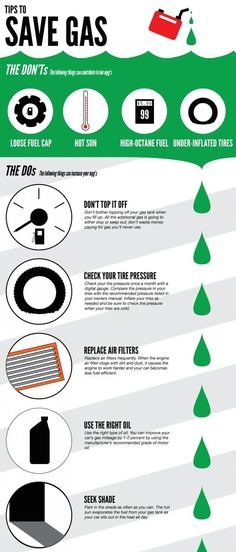 2 bar. If you experiment with load switches, you can see that for a loaded machine, the recommended rates also increase
2 bar. If you experiment with load switches, you can see that for a loaded machine, the recommended rates also increase Coating condition. On off-road, especially on loose earth or sand, you need to bleed the pressure in the tires, even below 1.0 bar. The area of adhesion to the surface will increase, and the car will become more passable. In loose, rough snow, this technique should also help. The main thing is to perform all maneuvers at low speed, without sudden movements. Otherwise, there is a risk of disassembling the wheel.
Speed and driving style. High speed, sharp turns, starts and stops heat up the tires more than during normal driving. This means that the pressure in them increases. That is, you should not pump over the wheels if you cannot change the driving style to a more relaxed one. This advice is also relevant for trips to the mountains. Long braking on descents, steep climbs and sharp turns affect tire pressure more than pressure reduction at altitude.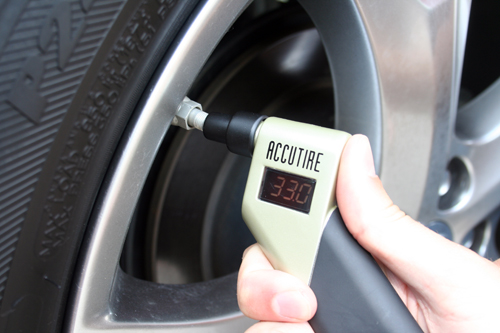
Standard recommended pressures will not work with custom size low profile tyres. You can focus on summary tables with pressure depending on tire sizes - they take into account different profile heights. You can choose the right pressure empirically. But it is best to seek the advice of specialists. Low profile tires are much more sensitive to incorrect pressure than standard tires.
/best-auto-2022/
Top 10 car articles of 2022
And one more important point: when checking tire pressure, it is important to remember about the spare wheel. For a full-size spare tire, the normal pressure will be the same as in the rest of the tires. But for rolling, a higher pressure is recommended - at the level of 4.2-4.5 bar. Roll-out - a spare wheel with a tire width less than the standard one, so the general pressure standards will not work. You need such a spare wheel to get to the nearest service, you can’t constantly ride it.
